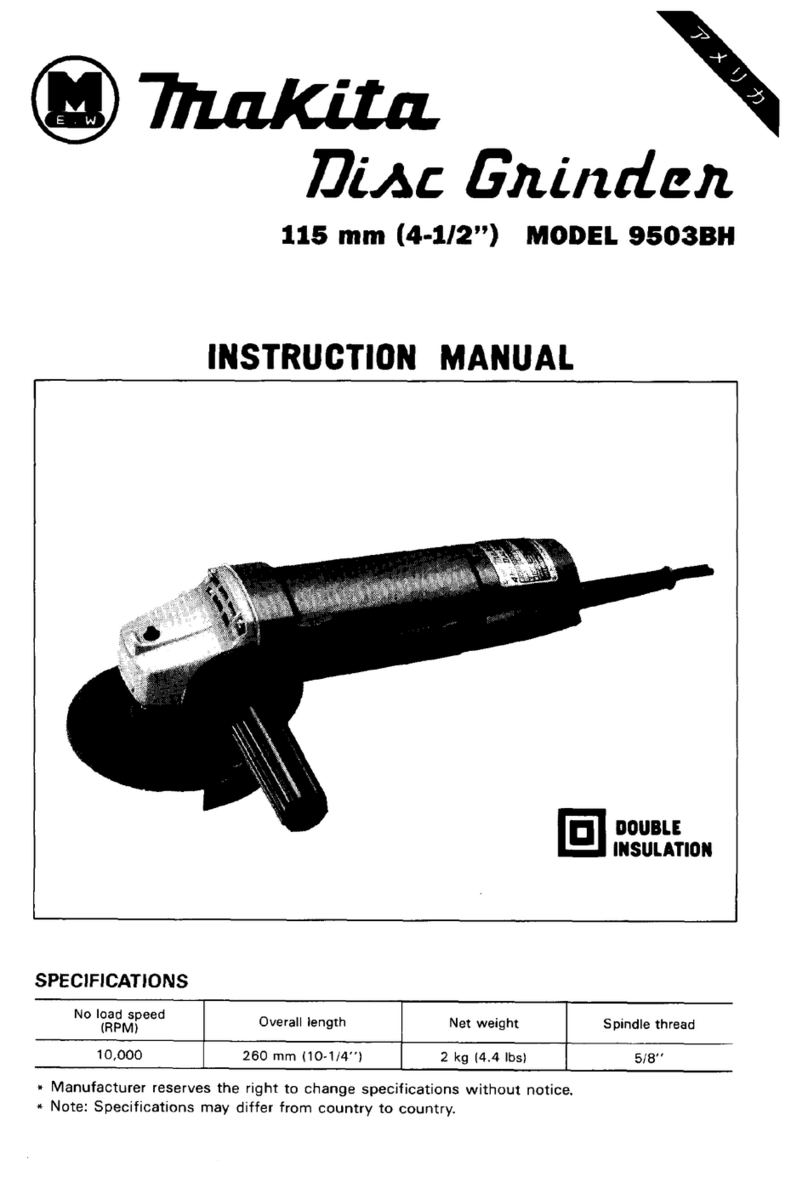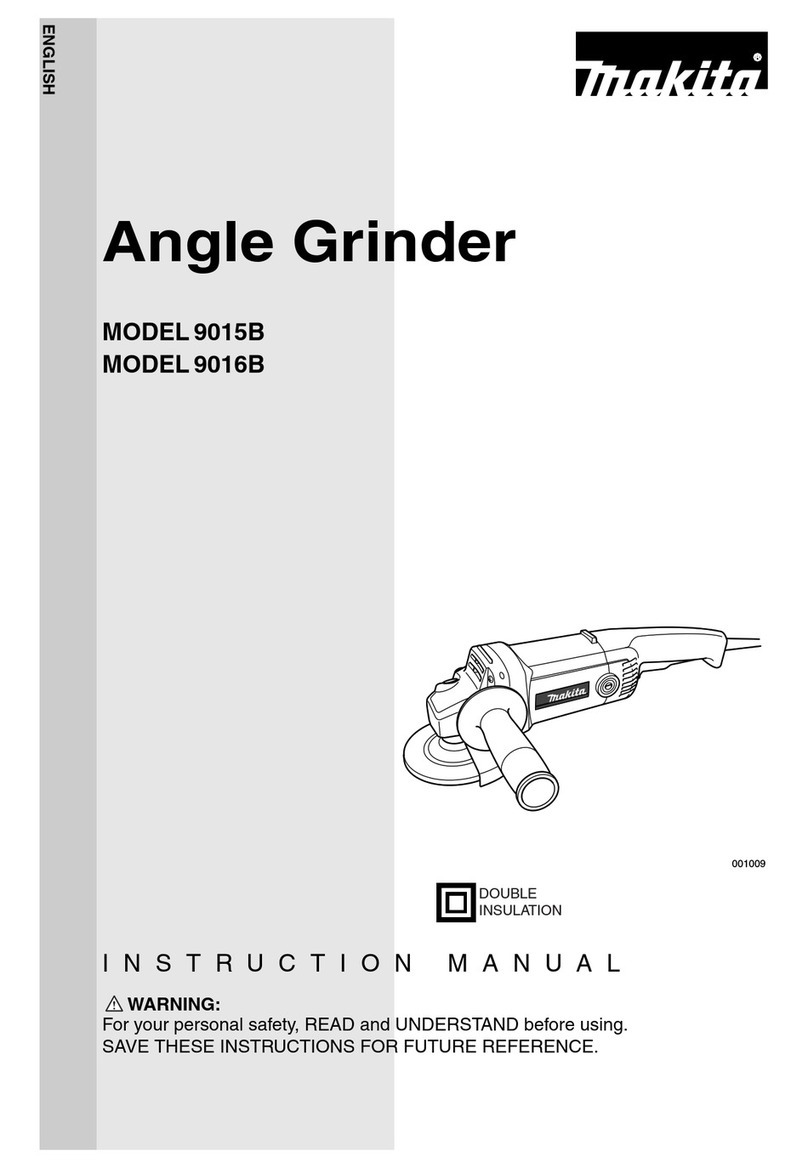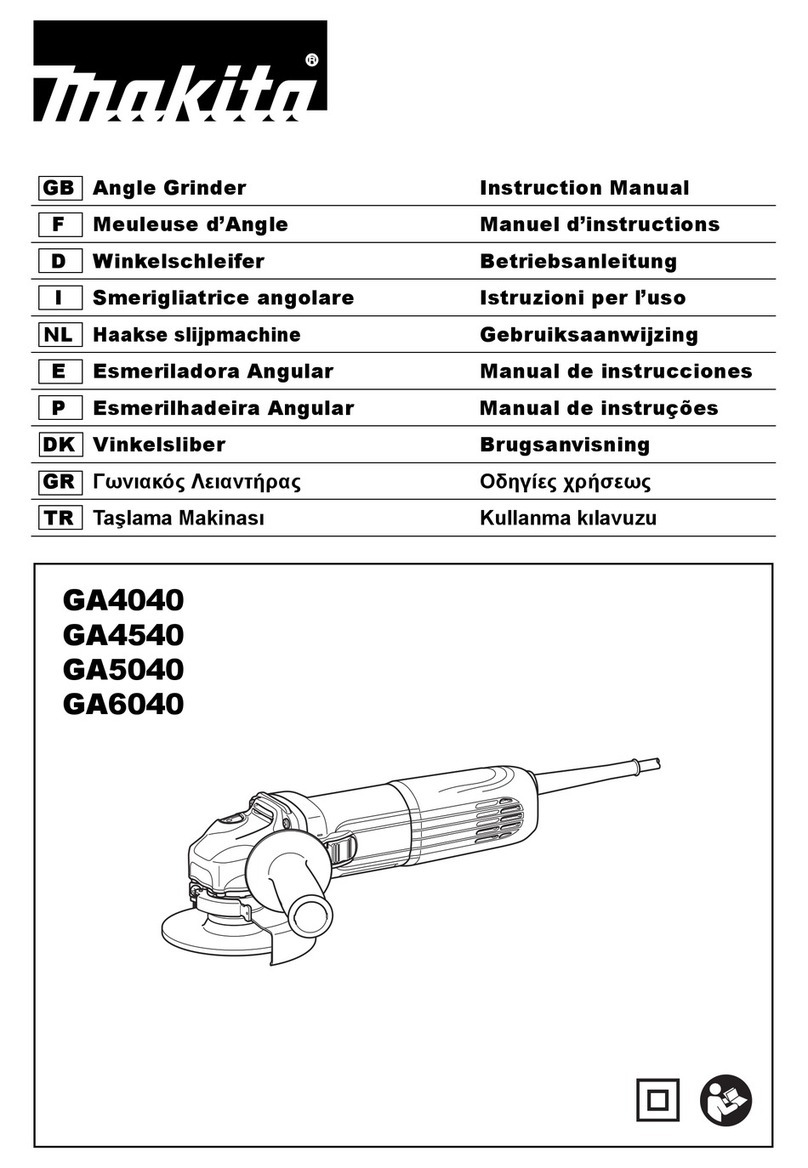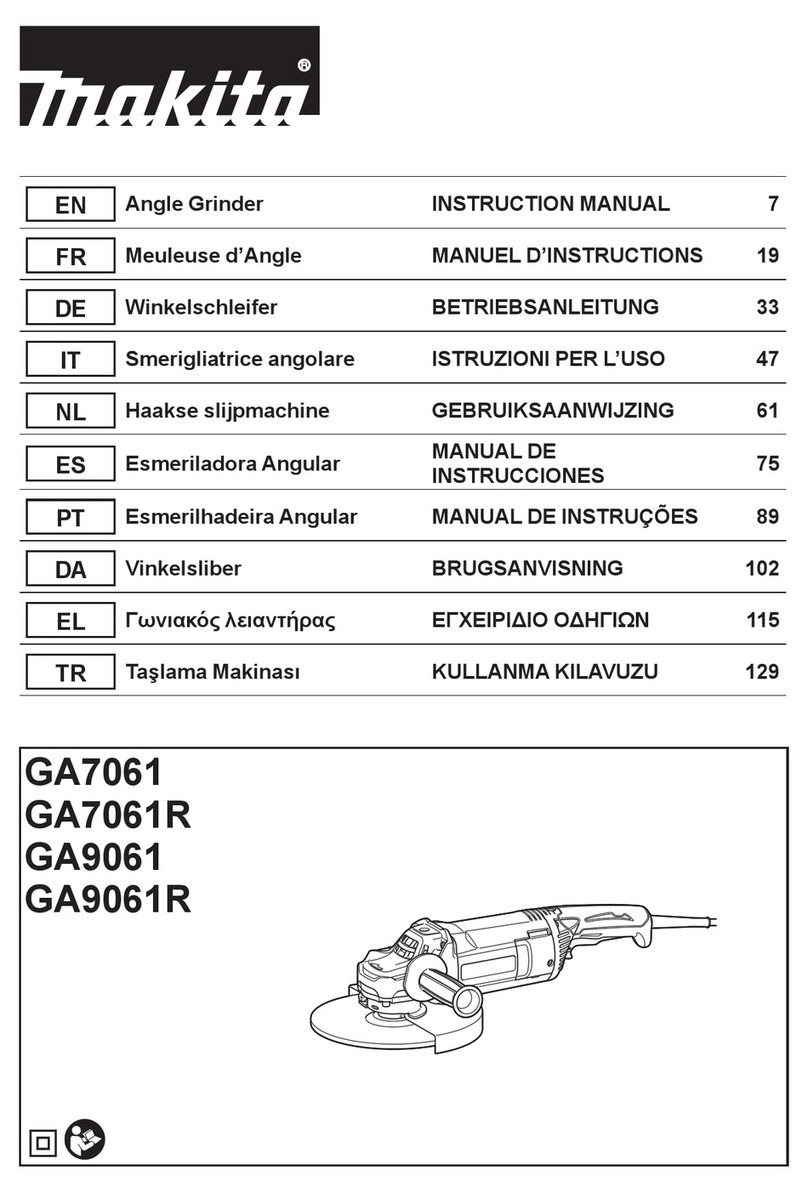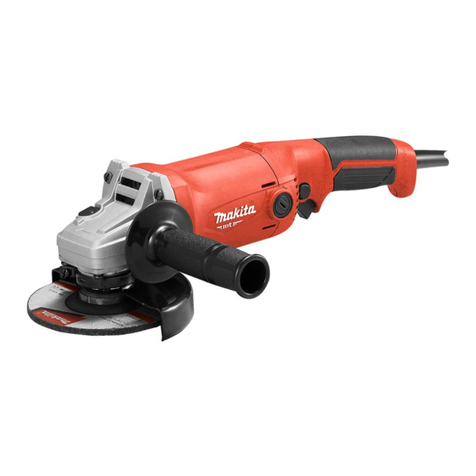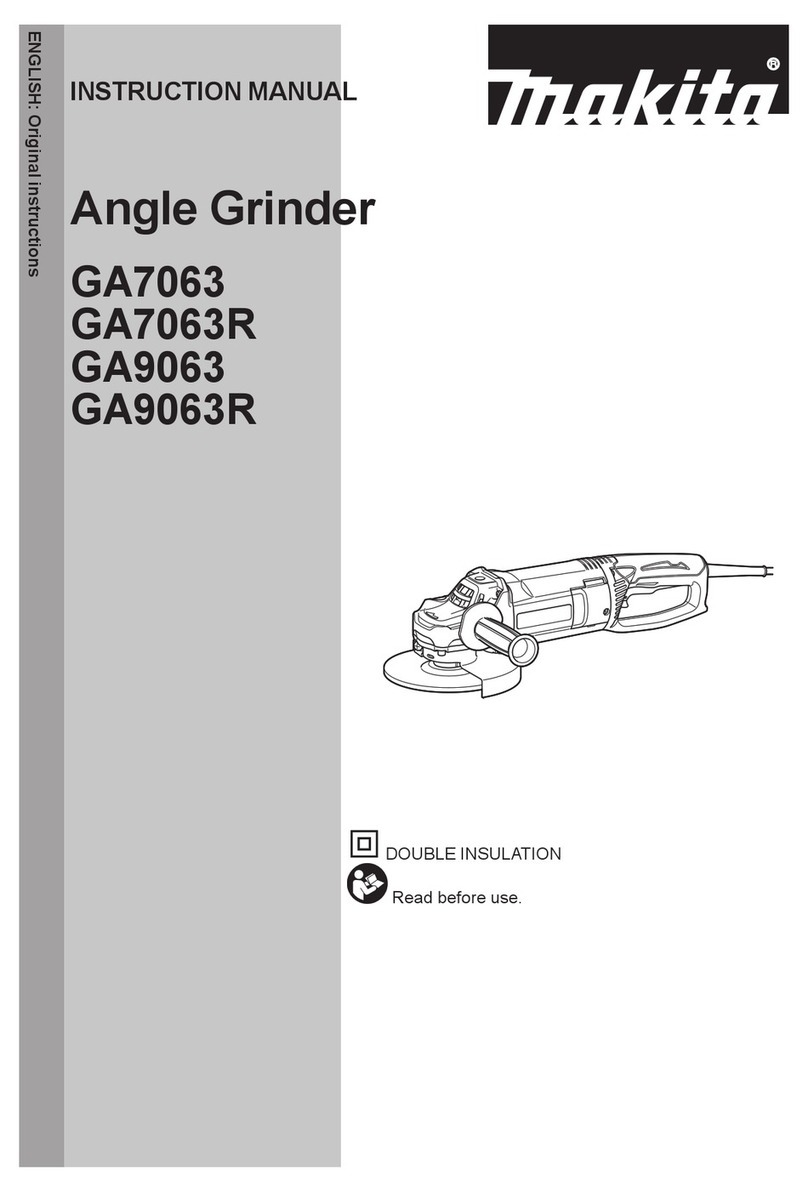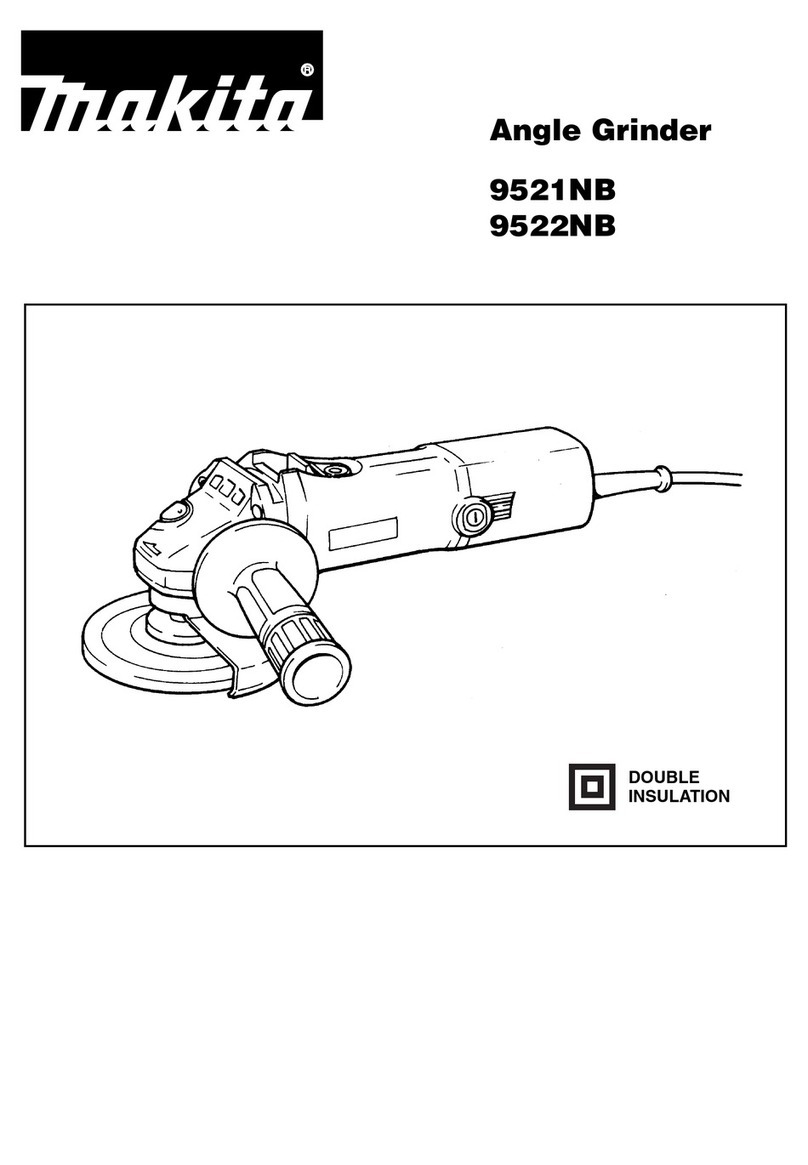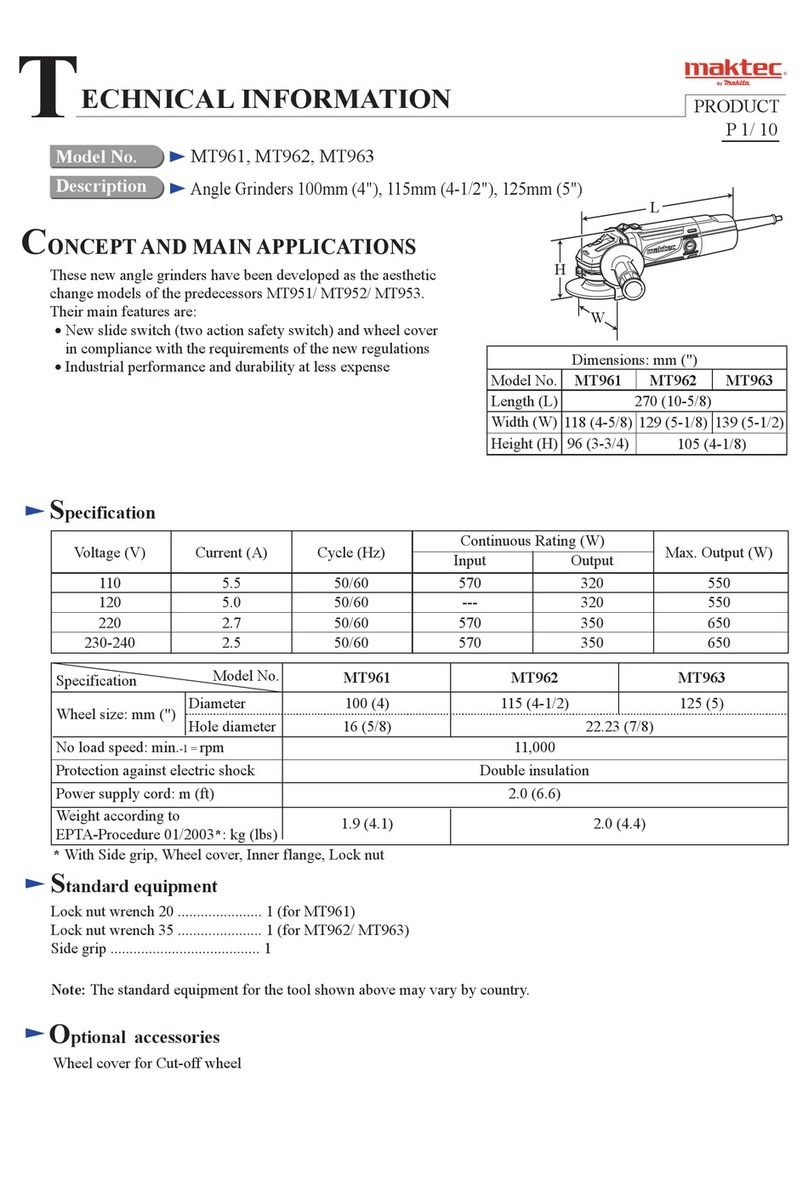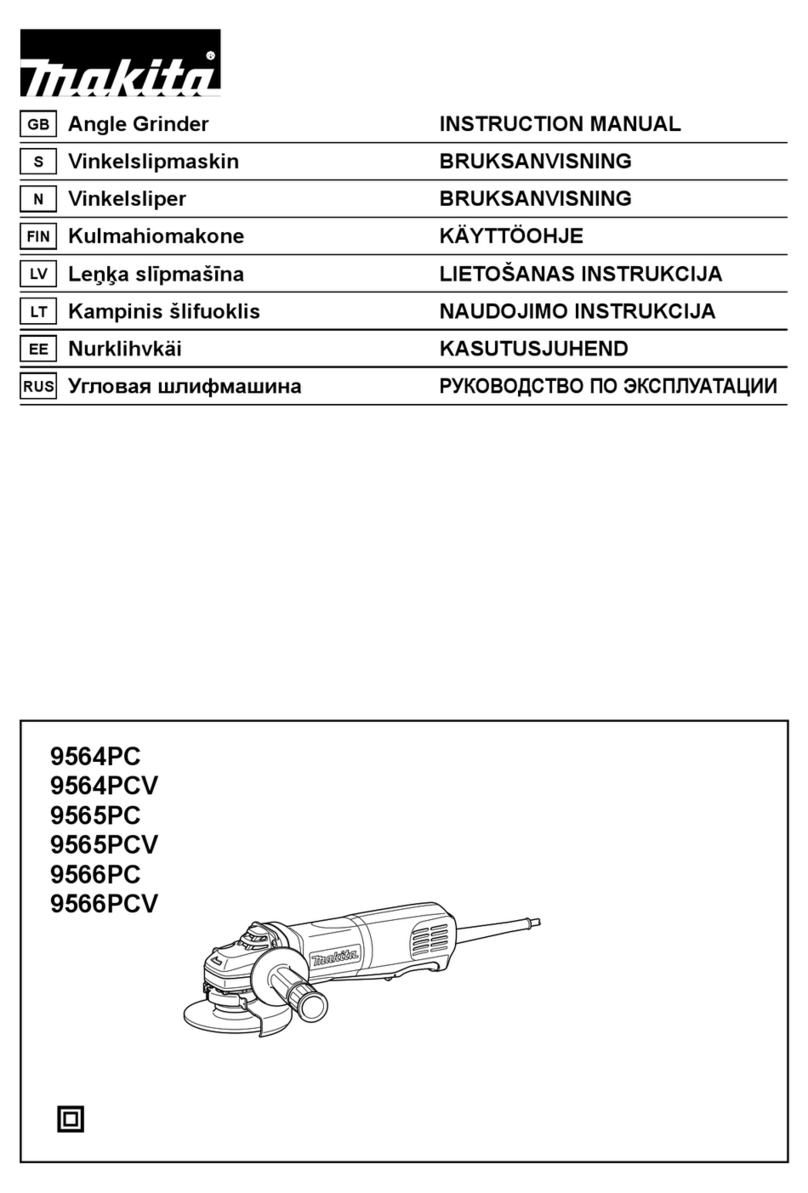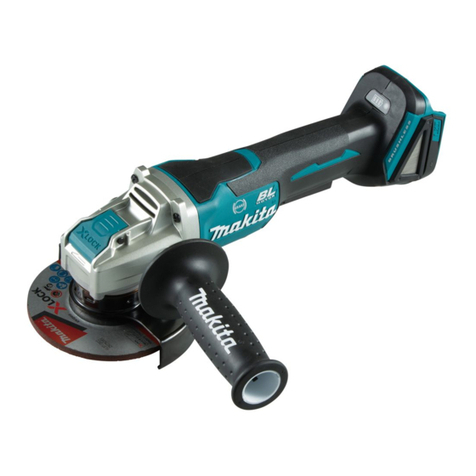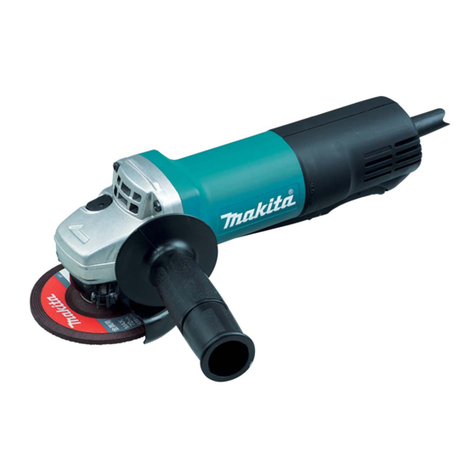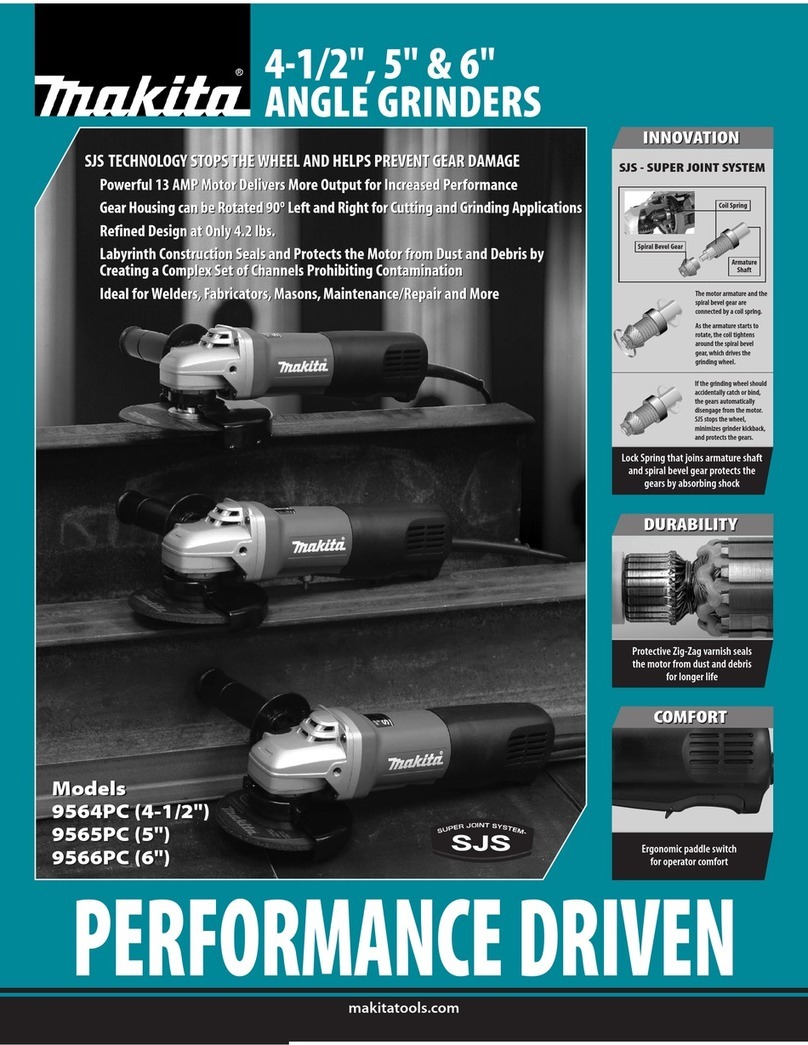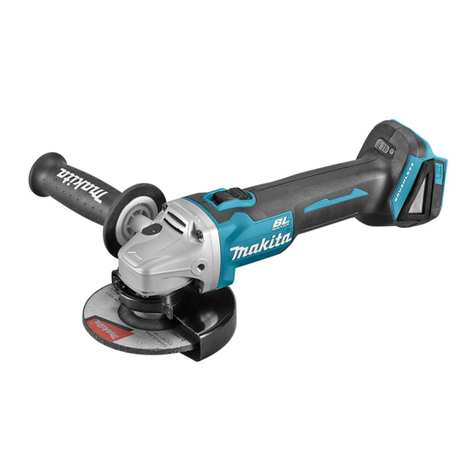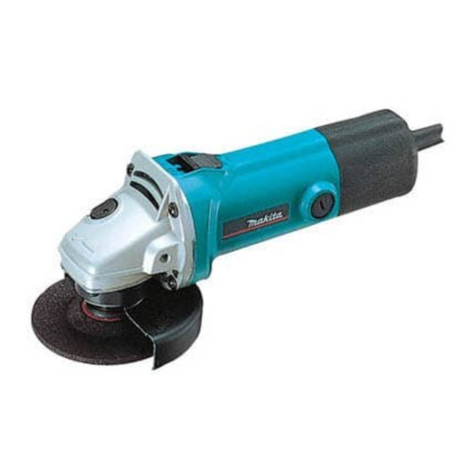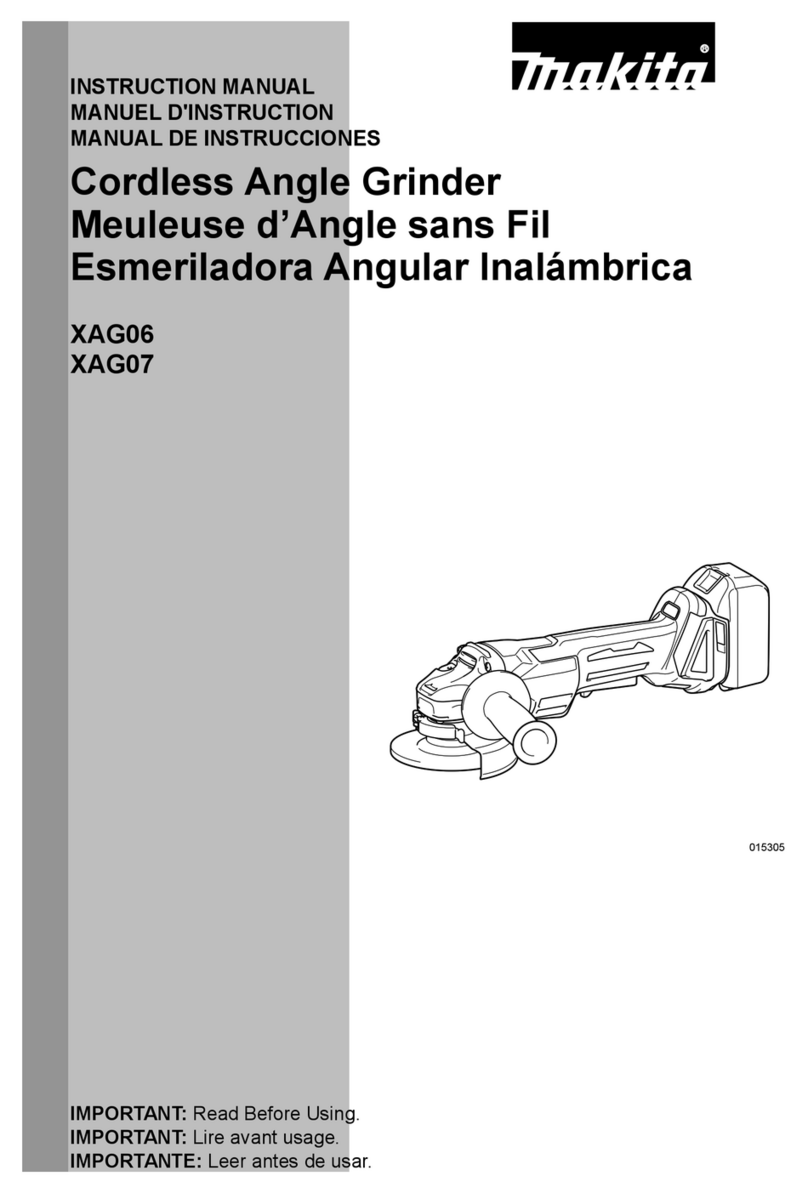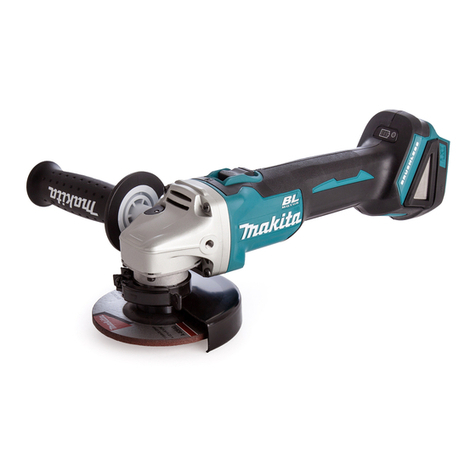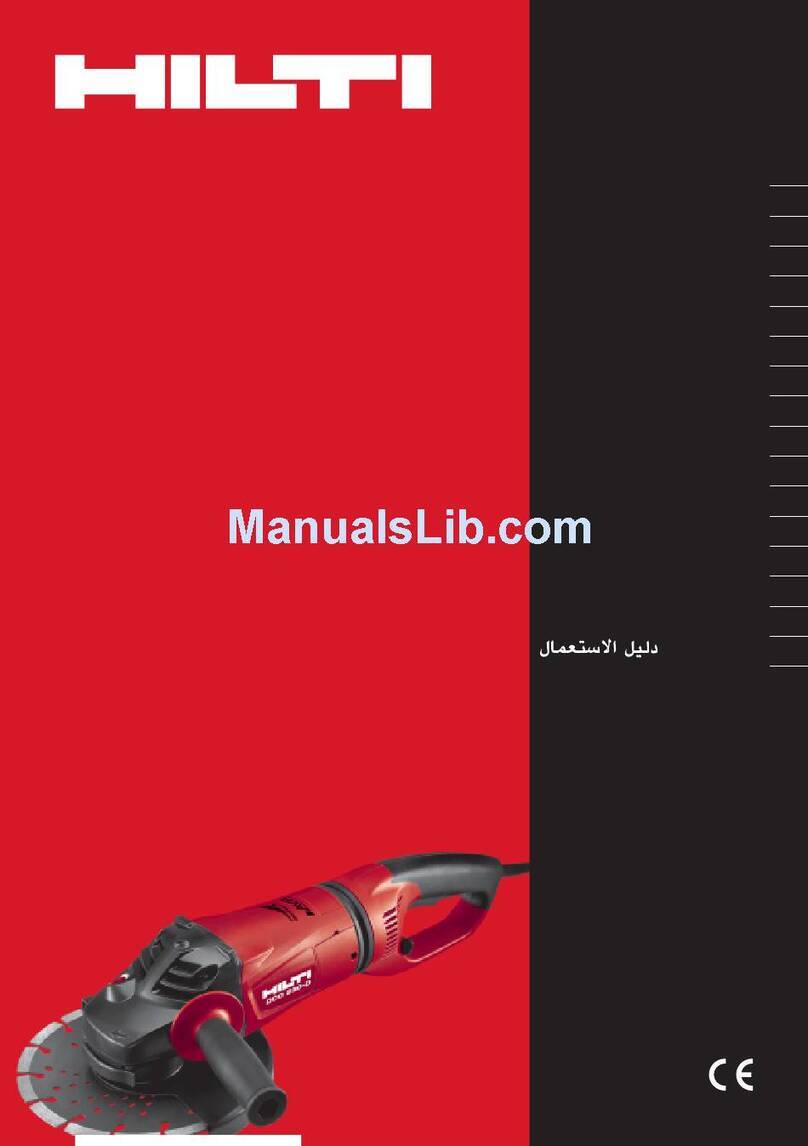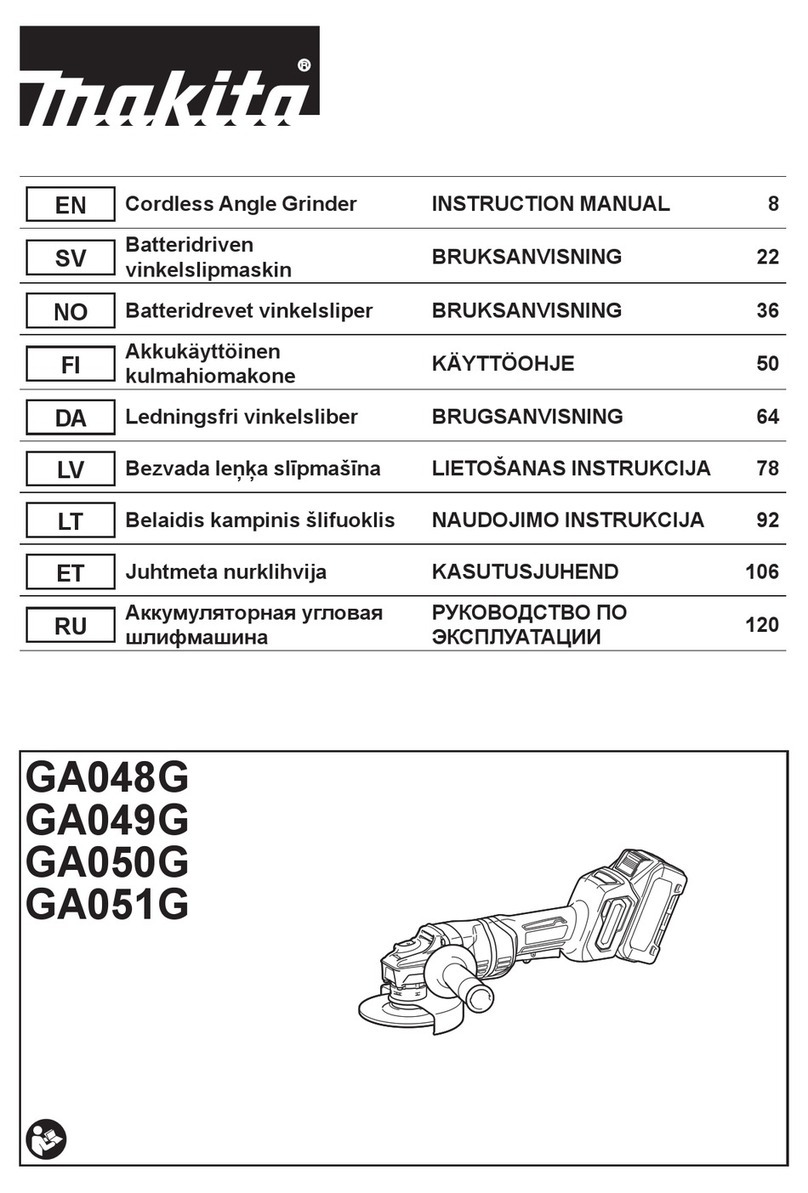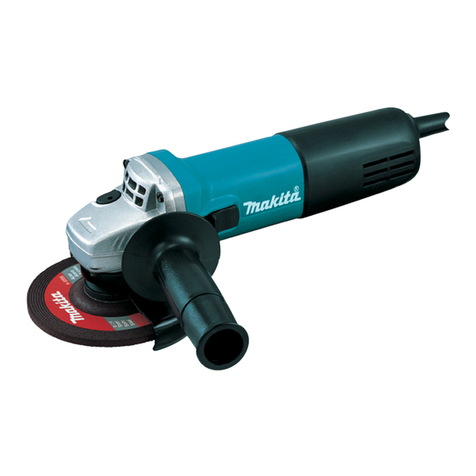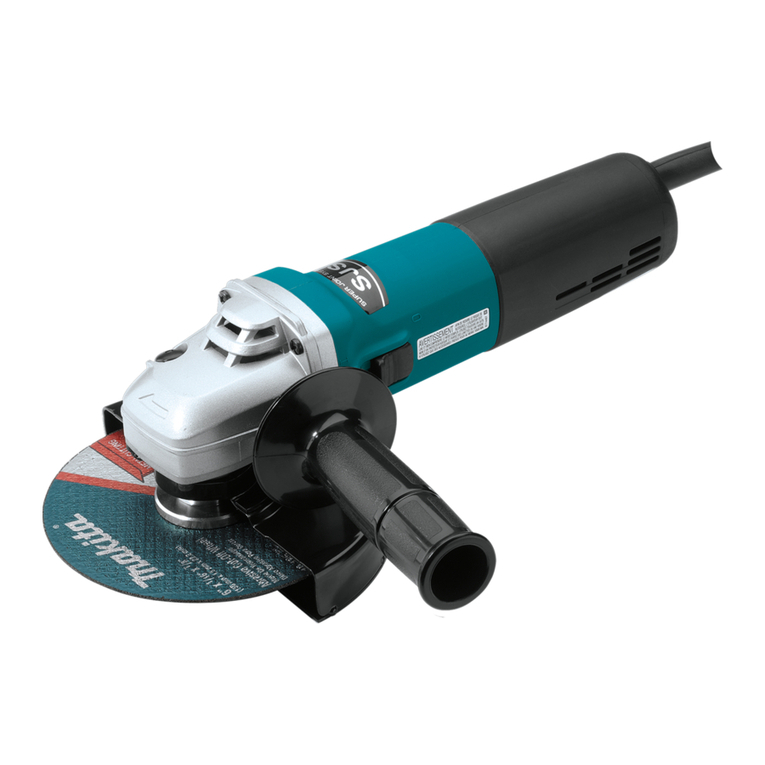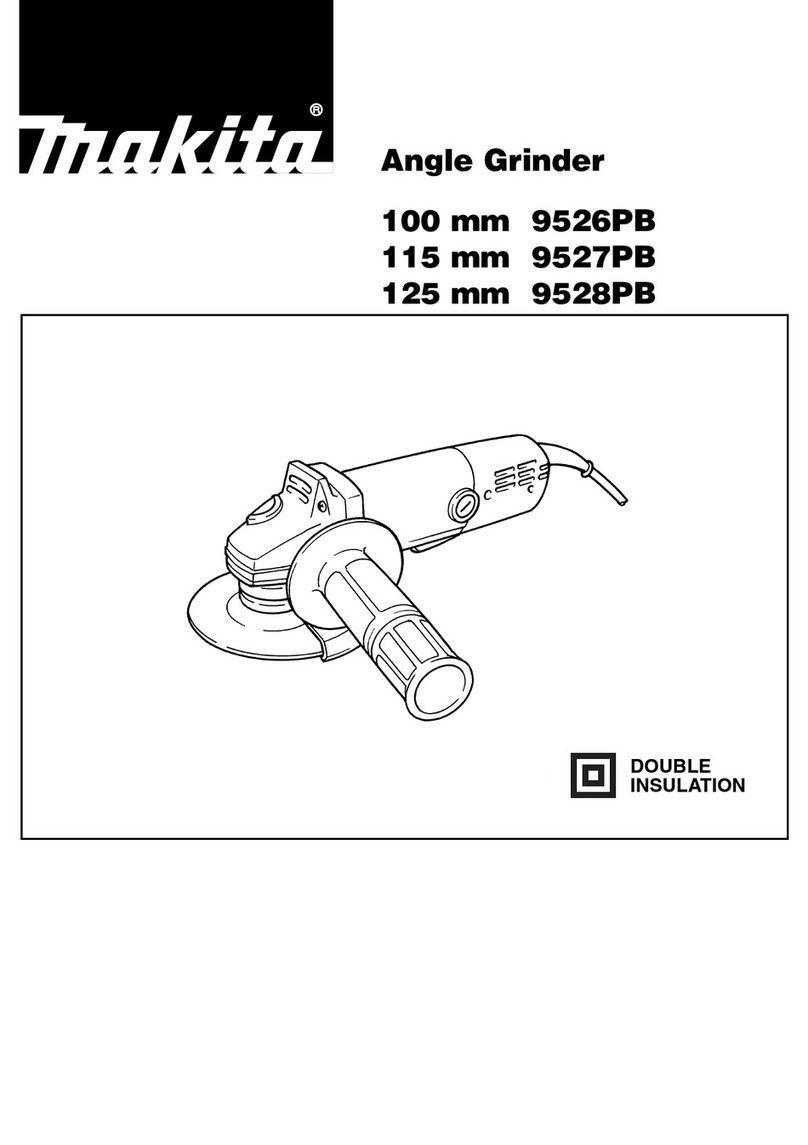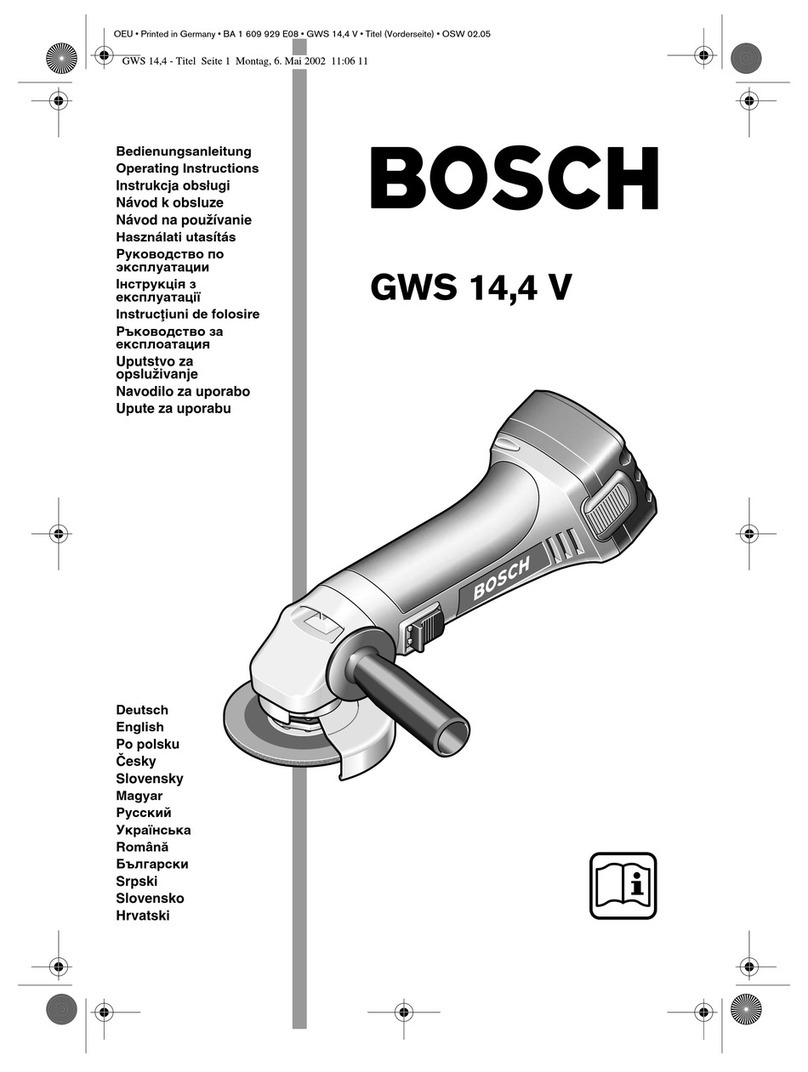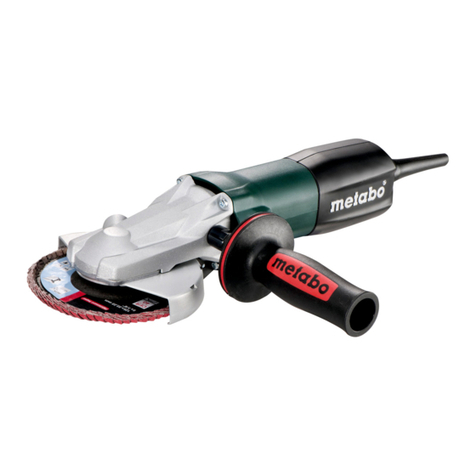
9ENGLISH
Symbols
The followings show the symbols which may be used
for the equipment. Be sure that you understand their
meaning before use.
Wear safety glasses.
Always operate with two hands.
operations.
Li-ion
Only for EU countries
Due to the presence of hazardous com-
ponents in the equipment, waste electrical
and electronic equipment, accumulators
and batteries may have a negative impact
on the environment and human health.
Do not dispose of electrical and electronic
appliances or batteries with household
waste!
In accordance with the European Directive
on waste electrical and electronic equip-
ment and on accumulators and batteries
and waste accumulators and batteries,
as well as their adaptation to national law,
waste electrical equipment, batteries and
accumulators should be stored separately
and delivered to a separate collection point
for municipal waste, operating in accor-
dance with the regulations on environmen-
tal protection.
This is indicated by the symbol of the
crossed-out wheeled bin placed on the
equipment.
Intended use
The tool is intended for grinding, sanding, wire brush-
ing, hole cutting and cutting of metal and stone materi-
als without the use of water.
Noise
The typical A-weighted noise level determined according to EN62841-2-3:
Model Sound pressure
level (LpA) : (dB(A))
Sound power level
(LWA) : (dB(A))
Uncertainty (K) :
(dB(A))
GA011G 84 92 3
GA012G 84 92 3
GA013G 85 93 3
GA014G 84 92 3
GA015G 84 92 3
GA016G 85 93 3
NOTE:
may be used for comparing one tool with another.
NOTE:
WARNING: Wear ear protection.
WARNING: -
ue(s) depending on the ways in which the tool is used especially what kind of workpiece is processed.
WARNING: Be sure to identify safety measures to protect the operator that are based on an estimation
of exposure in the actual conditions of use (taking account of all parts of the operating cycle such as the
WARNING: Grinding thin sheets of metal or other easily vibrating structures with a large surface can
result in a total noise emission much higher (up to 15 dB) than the declared noise emission values.
Take the increased noise emission into consideration for both the risk assessment of noise exposure and
selecting adequate hearing protection.

